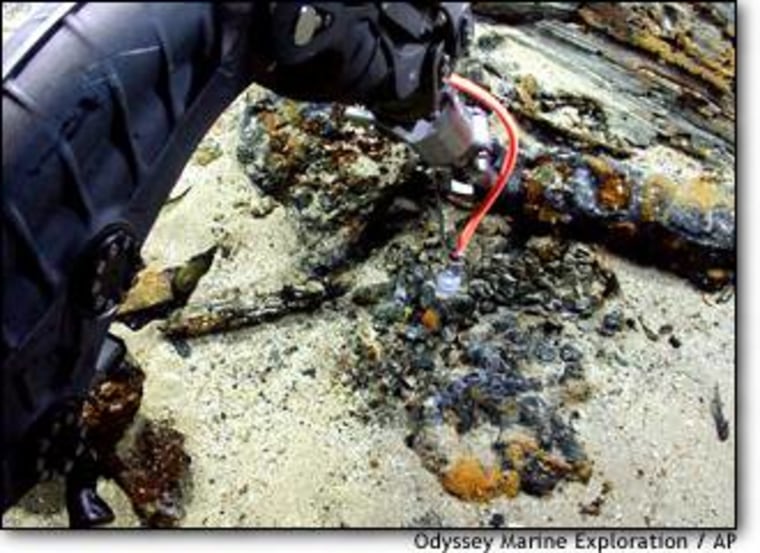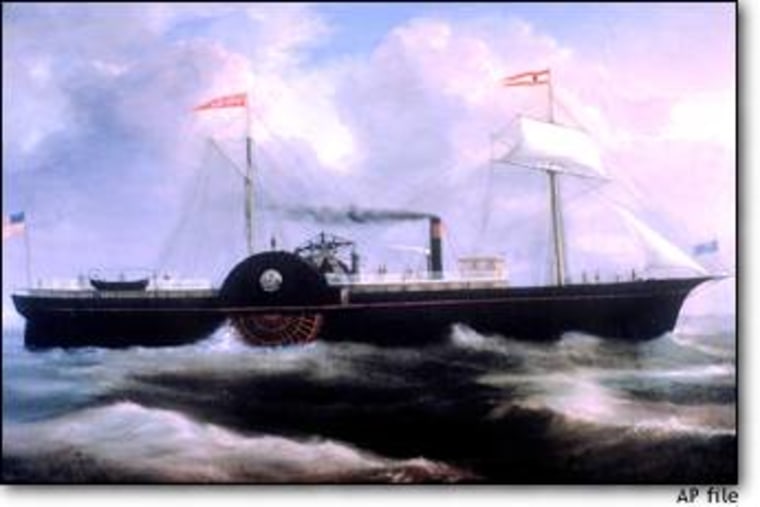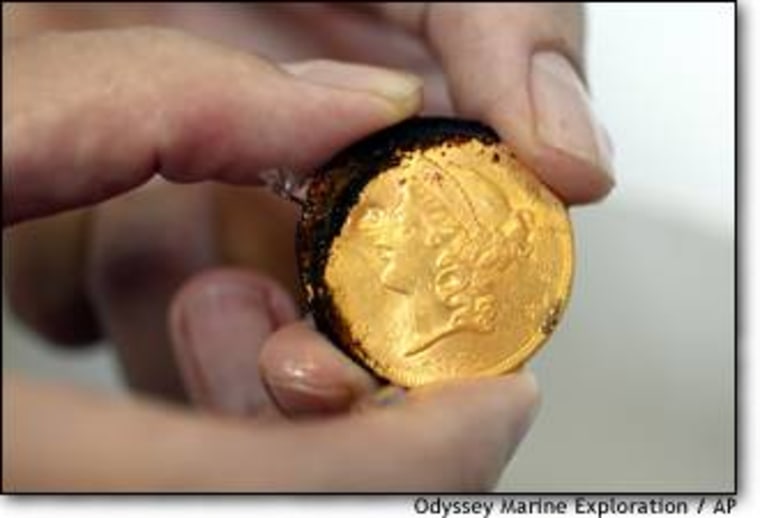Historical records indicate the sidewheel steamer SS Republic was carrying 20,000 gold coins — worth $120 million to $180 million today — when a hurricane sent it to the bottom of the Atlantic in 1865. But there could be more. A lot more.
Based on early examination of the sunken wreck by the crew of the ship Odyssey Explorer, coin expert Donald Kagin thinks there could be close to 30,000 gold pieces down there, 1,700 feet (518 meters) beneath the surface.
Either way, it will almost certainly be one of the richest shipwrecks ever salvaged. And because it is so far out in international water, salvage company Odyssey Marine Exploration doesn’t have to share the wealth with coastal state governments. The company also gained legal possession of the site in federal court under a principle known as “admiralty arrest” to bar anyone else from laying claim to the treasure.
Real-life ‘Pirates of the Caribbean'
High-resolution photos taken by a remotely controlled underwater vehicle show a massive pile of coins that looks like something out “Pirates of the Caribbean.”
“This is what we all dream about,” said Kagin, an author and authority on U.S. coins who has been hired to catalog and preserve the treasure.
It’s too early to say how much it will end up being worth, he said.
“This is like predicting the presidential election at 9 o’clock in the morning,” said John Morris, president of Odyssey Marine Exploration, a publicly traded company based in Tampa. “We have a lot of indicators here that make it look really good, but there’s a lot of work to do.”

The discovery in July of the Republic wreck, about 100 miles (160 kilometers) southeast of Savannah, was the culmination of more than decade of searching by Morris and his partner, Greg Stemm.
Along with their 250-foot (76-meter) Odyssey Explorer, the heart of the project is Zeus, a “remotely operated vehicle” — or ROV — that acts as the crews’ eyes and hands. The ROV is equipped with cameras and has robotic arms that can handle the most delicate finds. A vacuum system lifts coins and other artifacts into a container to be hoisted to the surface.
“It’s as good as being down there,” said project archaeologist Neil C. Dobson. “In fact, it’s even better because you can get so close. It’s the nearest you can get to getting the archaeologist on site.”
So far, the Odyssey Explorer crew has recovered about 1,750 coins and 300 other artifacts, including the ship’s bell. It could take another three months or so to finish. A National Geographic film team is chronicling the expedition.
History under the sea
The Republic, a 210-foot (64-meter) steamer that was once part of the Union fleet, was carrying 59 passengers and taking money and supplies from New York to New Orleans for post-Civil War reconstruction when it went down.
All the passengers escaped aboard life boats, according to newspaper accounts at the time, but the ship was lost until the Odyssey explorers detected it last summer.

The company also has plans to salvage another ship, the HMS Sussex, which sank in 1694 off Gibraltar while leading a British fleet into the Mediterranean Sea. Historians believe the 157-foot (48-meter) warship was carrying nine tons of gold intended to buy the support of the Duke of Savoy for war against France.
But while the Sussex’s cargo could be more valuable than the Republic’s, Odyssey will have to share it with the British government. The company will get 80 percent of the first $45 million and about 50 percent of the proceeds thereafter.
